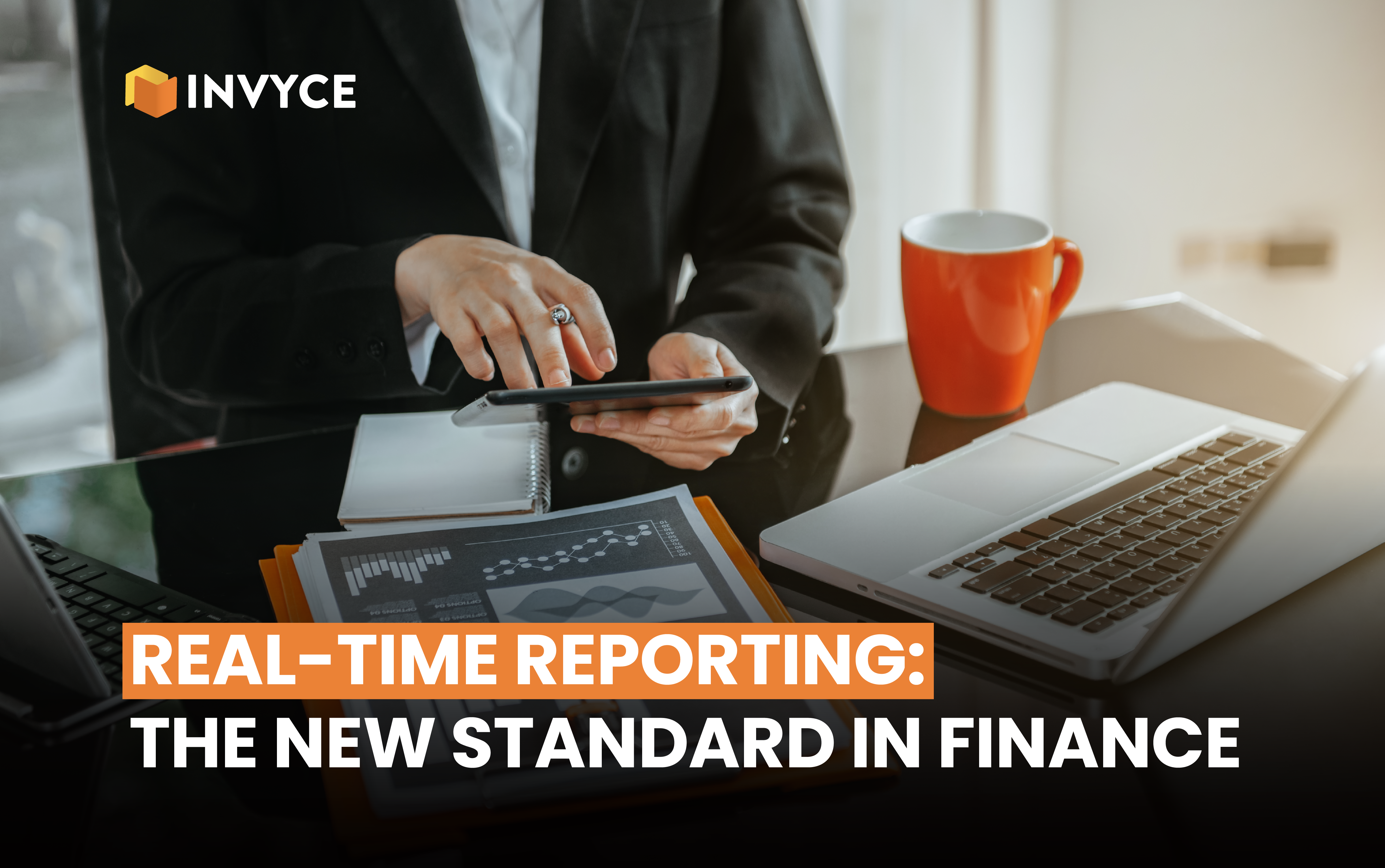05 Jul

Real-time reporting keeps your financial data constantly updated, allowing you to see the most current information immediately. Unlike traditional financial reporting, which updates periodically and relies on past data, real-time reporting provides a live view of your finances. This means you can check your financial status anytime for an accurate, up-to-date picture.
You can access this data through an online portal or software, ensuring you always have the latest information at your fingertips. Additionally, you can share this data with employees and clients as needed to promote better communication.
What is Real-Time Reporting?
Real-time reporting involves continuously updating and providing immediate access to financial data. Instead of waiting for monthly or quarterly updates, you get a live view of your financial status. Tools like cloud-based accounting software, automated data entry systems, and integrated financial dashboards make this possible. These technologies ensure that your financial data is always current and accurate.
Benefits of Real-Time Reporting
The following benefits are given below
Immediate Access to Financial Data
With real-time reporting, you no longer have to wait until the end of the month or quarter to see your financial status. Immediate access to financial data allows you to make timely decisions that can positively impact your business. For instance, if you notice a sudden drop in revenue or an unexpected spike in expenses, you can address these issues promptly, avoiding potential cash flow problems. This immediate access to information ensures that you are always on top of your financial health.
Enhanced Decision-Making Capabilities
Having real-time data at your fingertips means you can make informed decisions quickly. Whether you are considering a new investment, planning a budget, or strategizing for growth, real-time reporting provides the insights you need to choose the best course of action. This capability is particularly beneficial in dynamic markets where conditions can change rapidly. By analyzing up-to-the-minute data, you can adapt your strategies to capitalize on emerging opportunities or mitigate risks.
Improved Accuracy and Reduced Errors
Manual data entry and periodic updates are prone to errors that can skew your financial reports. Real-time reporting, on the other hand, relies on automated data collection and integration, significantly reducing the risk of human error. This accuracy is crucial for maintaining the integrity of your financial information. For example, automated systems can detect and correct discrepancies immediately, ensuring that your financial records are always accurate and reliable.
Better Risk Management
Real-time reporting enhances your ability to manage risks by providing an ongoing, accurate picture of your financial situation. You can quickly identify potential issues, such as liquidity shortages or budget overruns, and take proactive measures to address them. For instance, if real-time data shows that your expenses are outpacing revenue, you can implement cost-cutting measures or seek additional funding before the situation worsens. This proactive approach to risk management can save your business from financial distress.
Increased Transparency and Trust
Transparency in financial reporting is essential for building trust with stakeholders, including investors, creditors, and regulatory bodies. Real-time reporting ensures that your financial data is always current and accurate, fostering greater transparency. Stakeholders can have confidence in the integrity of your financial reports, knowing that they reflect the true state of your business at any given moment. This trust can be particularly advantageous when seeking investment or loans, as it demonstrates sound financial management and reliability.
Streamlined Financial Operations
Real-time reporting streamlines financial operations by automating many of the processes involved in data collection and reporting. This automation not only reduces the time and effort required for these tasks but also allows your finance team to focus on more strategic activities. For instance, instead of spending hours compiling monthly reports, your team can analyze real-time data to identify trends and opportunities, driving more value for your business.
Enhanced Competitive Advantage
In today’s competitive business environment, having a real-time view of your financial performance can give you a significant edge. You can respond faster to market changes, optimize your financial strategies, and make more informed decisions than competitors who rely on outdated data. This agility enables you to stay ahead of the curve and capitalize on new opportunities as they arise.
Improved Compliance and Reporting
Real-time reporting helps ensure compliance with regulatory requirements by providing accurate and timely financial information. Automated systems can generate reports that meet regulatory standards, reducing the risk of non-compliance and associated penalties. For instance, financial institutions can use real-time reporting to maintain compliance with stringent regulatory requirements, providing regulators with up-to-date information and demonstrating their commitment to transparency and accountability.
Scalability and Flexibility
Real-time reporting systems are typically scalable and flexible, allowing you to adapt them to your business’s changing needs. As your business grows, these systems can handle increasing volumes of data without compromising performance. This scalability ensures that your reporting capabilities can keep pace with your business’s expansion, providing you with the insights you need to manage growth effectively.
Enhanced Collaboration and Communication
Real-time reporting facilitates better collaboration and communication within your organization. Finance teams can share up-to-date financial information with other departments, fostering a more integrated approach to financial management. This collaboration ensures that all parts of your business are aligned and working towards common goals. For example, marketing and sales teams can use real-time financial data to adjust their strategies based on current performance, ensuring that their efforts are in sync with the company’s financial objectives.
Conclusion
A real-time reporting system provides instant access to accurate and up-to-date financial information. Its numerous benefits, including enhanced decision-making, improved accuracy, better risk management, increased transparency, and streamlined operations, make it an essential tool for modern businesses. With real-time reporting, you can gain a competitive edge, improve compliance, and promote better collaboration and communication within your organization. Ensure your business’s financial health and success with real-time reporting and navigate the financial landscape with confidence. Explore today’s tools and technologies that enable real-time reporting and take control of your finances.
Marjina Muskaan has over 5+ years of experience writing about finance, accounting, and enterprise topics. She was previously a senior writer at Invyce.com, where she created engaging and informative content that made complex financial concepts easy to understand.
Related Post
Copyright © 2024 – Powered by uConnect



Marjina Muskaan